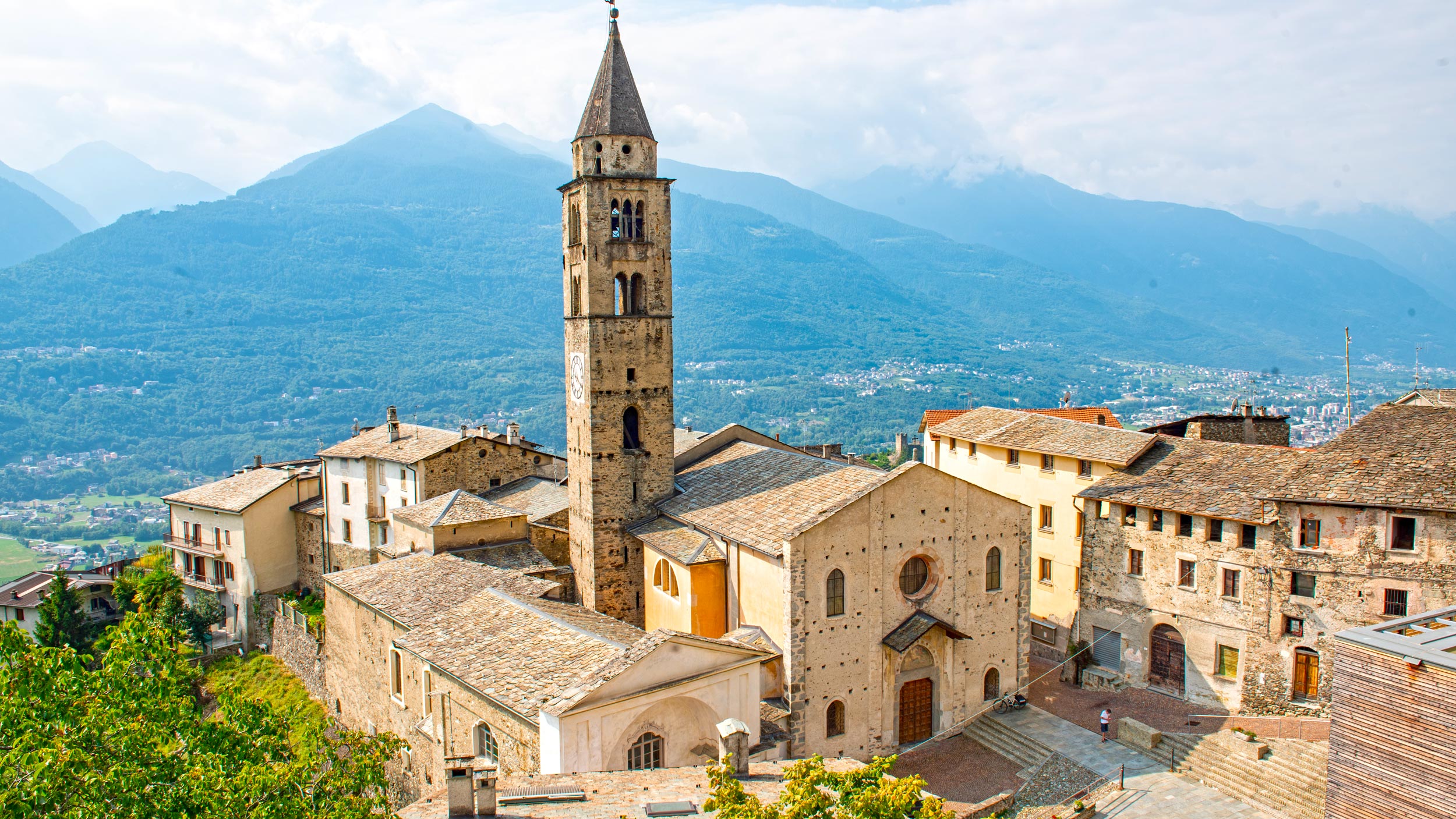Sqauare of the monument 41, 23020 Montagna in Valtellina, Sondrio (SO)
The church of the Madonna del Carmine in Montagna is located at the back of the parish church of San Giorgio. It is at the center of an extensive religious complex on a hill formerly encircled by fortifications built in the Middle Ages.
Remnants of the these defensive walls can still be found in the archpriest’s manse and in other parts of the complex.
It was originally known as the church of “Santa Maria in piazza” because it gave onto the piazza, but over time it was gradually engulfed in a labyrinth of walls. Its secluded position actually gives it a special charm, a precious tessera in an ecclesiastic mosaic whose stratified appearance derives from buildings at different elevations following the natural contours of the land and from its stylistic variety, the outcome of work done at different periods.
The church was erected in the early 16th century on a former cemetery that already featured a square chapel. The back wall of the chapel bore a fresco of a Madonna and Child with Simon of Trent commissioned by a eminent local family in 1481. The image quickly acquired renown as miraculous and the idea was born in the following century to build a church to enclose the chapel, transforming it into a presbytery.
To best decorate this locus of Marian faith, in 1514 the painter Sigismondo De Magistris of Como was commissioned to decorate the walls with frescoes of Episodes from the Life of the Virgin. The scenes are crowded with a host of characters, with novel features deriving from the painter’s apprenticeship in Milan and his relations with his contemporary artists.
A number of realistic details are worth pointing out: the small flagons for the Holy Mass frescoed at the back of a small space; the bowl with paints and brushes “forgotten” by the painter on the edge of the socle; and, in the scene of the Nativity of the Virgin, the lovely figure of the young servant captured in the act of plucking a hen to prepare a fine broth for Saint Anne. Naturally, the new cycle was carefully painted to preserve the miraculous image, which was enclosed in a precious carved and painted wooden frame.
From the vantage point of the street, nothing now suggests the existence of such a suggestive church. It is reached via a narrow alley, and the two small windows on either side of the lovely marble entrance allow one to peek inside.
Once inside, the simple cement plaster on the walls exalts the bright colors of the frescoes.







